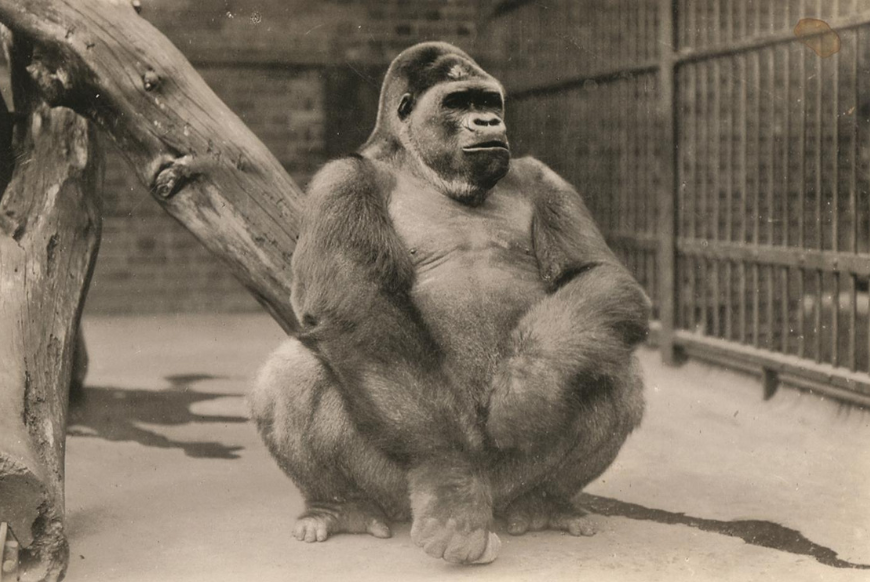The glittering edible replica of Alfred the Gorilla arrived at Bristol Zoo Project, just off Junction 17 of the M5 motorway, this morning (Thursday 10 August) and will be on display to the public until October.
Alfred took more than three weeks to make and has been created as part of artist Luke Jerram’s ‘Edible Histories’ project. He is one of the chocolate sculptures in the Bristol 650 celebrations, which recognise the city’s inspiring culture and history.
The gorilla has been sculpted by local firm Zara’s Chocolates using Fairtrade chocolate, along with four other objects chosen to tell the story of the city. They include a mini-chocolate replica of the Concorde Alpha Foxtrot – the last of the iconic supersonic jets to be built and to fly from Filton (now the site of Aerospace Bristol), and the largest chocolate button in history at Glenside Hospital Museum.
Alfred arrived at Bristol Zoo Gardens in 1930 and was an instant hit with visitors. He went on to become famous in America during World War II, when US Army troops stationed in Bristol took photographs and stories of him home and he appeared in the press there. He is now a popular taxidermy attraction at the Bristol Museum and Art Gallery.

Chocolate Alfred has been made possible thanks to the generosity of the zoo’s supporters, who have funded his creation.
Justin Morris, Chief Executive Officer at Bristol Zoological Society, said: “Alfred is remembered with great affection by many people in Bristol and this chocolate sculpture of him not only showcases our work in Equatorial Guinea, where we protect western lowland gorillas in the wild, it also points to the future.
“We are creating a new Central African Forest habitat at Bristol Zoo Project, which will become home to our existing troop of western lowland gorillas – still at our former Bristol Zoo Gardens site. They will be joined by other threatened species such as cherry-crowned mangabey monkeys, African grey parrots and slender-snouted crocodiles.
“Construction on the new zoo begins next year, where more than 80 percent of animals, like the gorillas, will be linked to our conservation work. We can’t wait for everyone to be able to see Bristol’s real gorillas again!”
The Edible Histories project has been funded by Mayor Dan Norris’ West of England Mayoral Combined Authority.
Mr Norris said: “The way we treat animals is a measure of a civilised society. For me, Chocolate Alfred is all about Bristol’s relationship with animals and its importance as a leader when it comes to conservation and nature, something Bristolians young and old can feel rightly proud about. I’m delighted to celebrate this by showing off this chocolate sculpture of one of Bristol’s most important and enduring mascots, and one which speaks to that wider conversation about how we look after animals in our care and their welfare to the best of our ability.
“And I’m proud this all part of a brilliant chocolate arts project I’m backing celebrating the incredible history around some of the objects and places that define such an extraordinary city told through everyone’s favourite sweet substance.”
Artist Luke Jerram, said: "Chocolate Alfred represents Bristol’s history of conservation and natural history work – something I really wanted to capture through Edible Histories. The city is home to dozens of charities, companies and other organisations working hard to protect our precious planet and the animals we share it with. That’s something we should all be proud of, and support."
The artwork, wrapped in foil, will be on display at Bristol Zoo Project until October. Alfred and the other four chocolate objects will then be brought together for the first time as part of a free public event in Bristol city centre, where they will be broken up and distributed to the general public and local foodbanks.
For more information, please visit www.bristolzoo.org.uk.
.png)
Related
Comments
Comments are disabled for this post.











